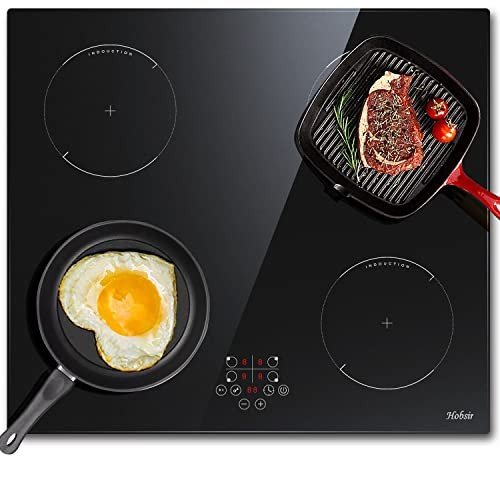Understanding Cookers and Hobs: A Comprehensive Guide
Cooking is an integral element of day-to-day life, and the advancement of kitchen home appliances plays a substantial function in how efficiently and successfully people prepare their meals. Amongst these home appliances, cookers and hobs are 2 of the most essential instruments discovered in modern kitchens. Ovens Online looks into the distinctions between cookers and hobs, examines their numerous types, and provides insights on their functions, maintenance, and choice procedure.
What are Cookers and Hobs?
Cookers
Cookers are thorough kitchen appliances developed for cooking jobs, typically integrating an oven and a hob. They are available in different configurations and types, catering to diverse cooking requirements and choices.
Hobs
Hobs, on the other hand, are more focused appliances primarily utilized for boiling, frying, and other stovetop cooking approaches. Hobs can be standalone systems or an integrated part of larger cookers.
| Feature | Cookers | Hobs |
|---|---|---|
| Function | Combines oven and hob | Stovetop cooking just |
| Design | All-in-one system | Separate unit or integrated |
| Types | Electric, gas, dual fuel | Gas, electric, induction |
| Installation | Enables more versatility | Built into the countertop |
| Price Range | Normally greater | Varies widely |
Types of Cookers
1. Electric Cookers
Electric cookers utilize electrical energy as their primary power source. They typically feature an integrated oven and multiple cooking zones on the hob.
Advantages:
- Even heat circulation
- Available in numerous styles (e.g., freestanding, integrated)
2. Gas Cookers
Gas cookers run on natural gas or liquefied petroleum gas (LPG). They provide instant heat control, making them a preferred amongst professional chefs.
Benefits:
- Instant heat modifications
- More budget-friendly operational costs
3. Dual Fuel Cookers
Double fuel cookers integrate the heat of gas with the effectiveness of electric ovens. This setup permits the best of both worlds, offering control and consistent results.
Benefits:
- Flexible cooking choices
- Accurate control over stovetop cooking and baking
4. Variety Cookers
Range cookers are larger and more powerful than standard cookers, including multiple ovens and hobs for extensive cooking tasks.
Advantages:
- Ideal for big families or cooking for occasions
- Uses various cooking choices in one device
Kinds of Hobs
1. Gas Hobs
Gas hobs are preferred for their quick heating and strong flame, making them outstanding for burning and stir-frying.
Benefits:
- Instant heat and control
- Suitable with any type of cookware
2. Electric Hobs
Electric hobs heat up utilizing electric coils or glass-ceramic surfaces, providing a modern-day look and efficient cooking.
Advantages:
- Easier to clean up
- Consistent surface area appropriate for different pots and pans
3. Induction Hobs
Induction hobs utilize magnetic fields to heat pots and pans directly, offering quick and energy-efficient cooking.
Benefits:
- Safe (cool surface area after removing cookware)
- Energy-efficient and accurate
4. Solid Plate Hobs
These traditional hobs use solid electric plates that warm up gradually.
Benefits:
- Rugged and long lasting
- Usually more economical than other types
Key Features to Consider
When choosing a cooker or hob, a number of functions ought to be taken into account:
- Size and Space: Consider the size of your kitchen and the quantity of work space needed.
- Cooking Style: Choose based upon choice-- gas for control, induction for efficiency, etc.
- Effectiveness Ratings: Look for energy-efficient models to lower utility bills.
- Relieve of Cleaning: Smooth surfaces facilitate simple upkeep.
- Safety Features: Automatic shutoff, flame failure gadgets, and child locks enhance safety.
Upkeep Tips
Preserving cookers and hobs lengthens their life-span and guarantees safe operations.
- Routine Cleaning: Wipe down surface areas after usage to prevent accumulation.
- Inspect Seals: Check oven door seals routinely for wear and tear to maintain efficiency.
- Service Regularly: Schedule professional servicing a minimum of as soon as a year.
- Ideal Cookware: Use pots and pans proper for your hob type to prevent damage.
Frequently Asked Questions (FAQs)
What is the difference in between a cooker and a hob?
A cooker combines an oven and hob in one system, while a hob is normally a standalone home appliance for stovetop cooking.
Do I require a professional to install a gas cooker or hob?
Yes, expert installation is advised for gas home appliances to guarantee safety and compliance with regional policies.
Can I use any kind of pots and pans on induction hobs?
Induction hobs need magnetic cookware. Stainless steel or cast iron pots work best. Fan Oven Sales -magnetic products will not warm up.
Are electric cookers more energy-efficient than gas cookers?
While both have advantages, electric cookers tend to be more energy-efficient total, particularly with modern, high-efficiency models.
How typically should I clean my cooker or hob?
It is best to clean them after each use and carry out a thorough cleansing weekly to prevent buildup and residue.
Understanding the distinctions, functions, types, and maintenance ideas for cookers and hobs is vital for any home cook. By selecting the best appliance suited to their culinary requirements, users can boost their cooking experience, making meal preparation an efficient and satisfying task. Whether selecting the instantaneous control of gas or the smooth efficiency of induction, picking the appropriate cooker or hob can result in a significantly enhanced kitchen experience.

